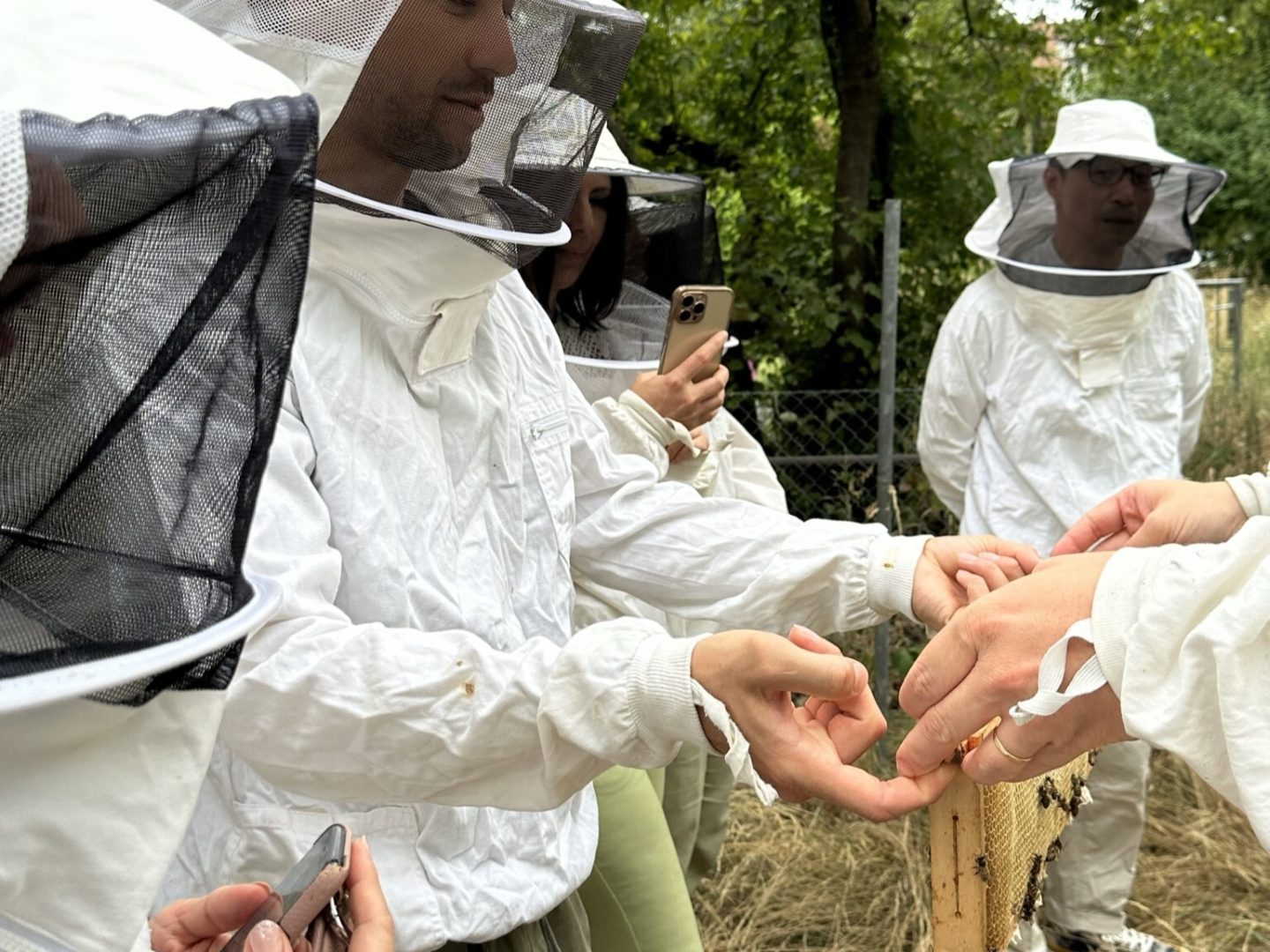Bees in the city
Learning more about urban environments
As part of Cosa’s commitment to corporate social responsibility, we recently attended an engaging workshop at Wabe3, a unique apiary dedicated to promoting biodiversity in urban areas. Through their workshops, they aim to create awareness about the significance of bees in our ecosystem and the fascinating world of beekeeping.
Rooftop sanctuaries
Bees are among the most efficient pollinators. By transferring pollen from one flower to another, they help plants produce fruit, but the number of these little helpers is declining. The Cosa team went to visit a local beekeeper to find out more about honey bees and what we can do to help.
Around the corner from our office is one of 12 flat roofs in Zurich where Anna and her husband Tom have their honey bees. At first, you might think that keeping bees here doesn’t sound like a good idea but looking at the large variety of flowering plants around us, it all makes sense.

We wanted to pay the queen bee our respects for producing such a large number of bees but she is nowhere to be found. The more we hear about honey bees, the more we want to know. Flight of the drones, workers becoming guards, the queen’s departure, shiver heating and the magic potion Royal Jelly might sound like chapter titles from a fantasy book but they’re part of real life for bees.
Problems and solutions
After the fun and fascinating facts, we are also confronted with the problems honey bees and wild bees face. One of the biggest issues is the pesticides that are used in agriculture. They damage the bees’ nervous system and their sense of orientation. In addition the large fields, with a small variety of plants that flower for a short time do not offer enough food.


We can help by planting native bee-friendly plants that flower at different times of the year in our gardens or balconies. Insect hotels are fun to build and offer a safe place for the development of wild bee offspring.
This innovative beekeeping company, Wabe3, is contributing to the diversity of nature in urban areas and also bringing the fascination of beekeeping to the public and raising awareness for the bees. We really enjoyed our visit and have a new understanding of the importance of insects like bees in our environment.


























